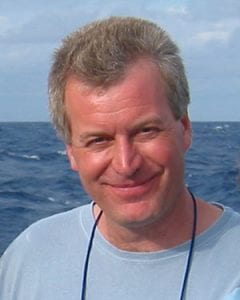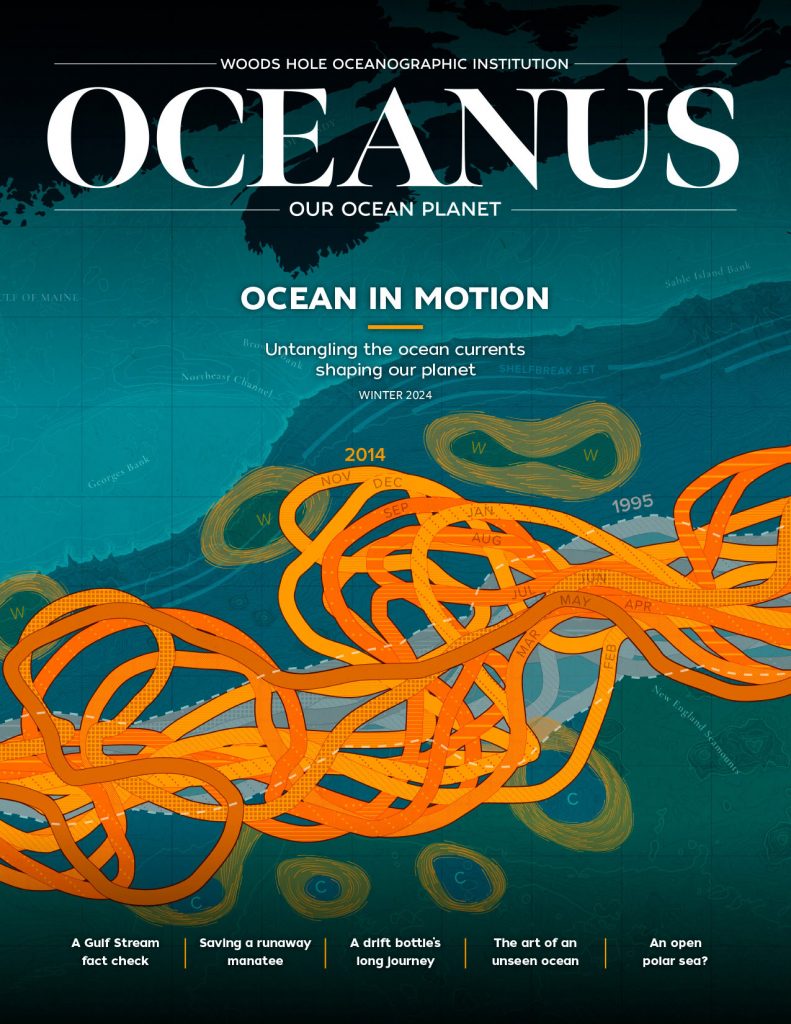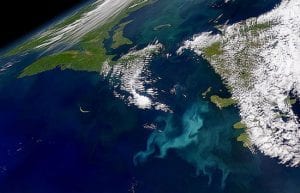Timothy I. Eglinton

Born and raised in the United Kingdom, Tim Eglinton actually was familiar with Woods Hole Oceanogrpahic Institution
long before his arrival. His father, Geoff, a preeminent organic
chemist from Bristol University in England, had long told of this wonderful
institution on the other side of the pond that provided a fertile
research environment in an idyllic location. Eglinton’s own graduate and
postgraduate education centered on organic matter deeply buried in
sedimentary rocks. He became interested in the biological precursors to
this organic matter and processes leading to its burial in ocean
sediments. Working on the premise that “the present is the key to the
past,” Eglinton came to WHOI in 1990 seeking to examine carbon cycling in
contemporary oceans. Although happily married with three children, Tim
is still very active in the dating gamethat is, radiocarbon dating
of organic molecules. He and his colleagues carefully isolate and
determine ages of minute amounts of individual organic compounds from
ocean
sediments and particles. These hard-won dates
can tell us much about how organic compounds form and move around the
carbon cycle in the oceans.

